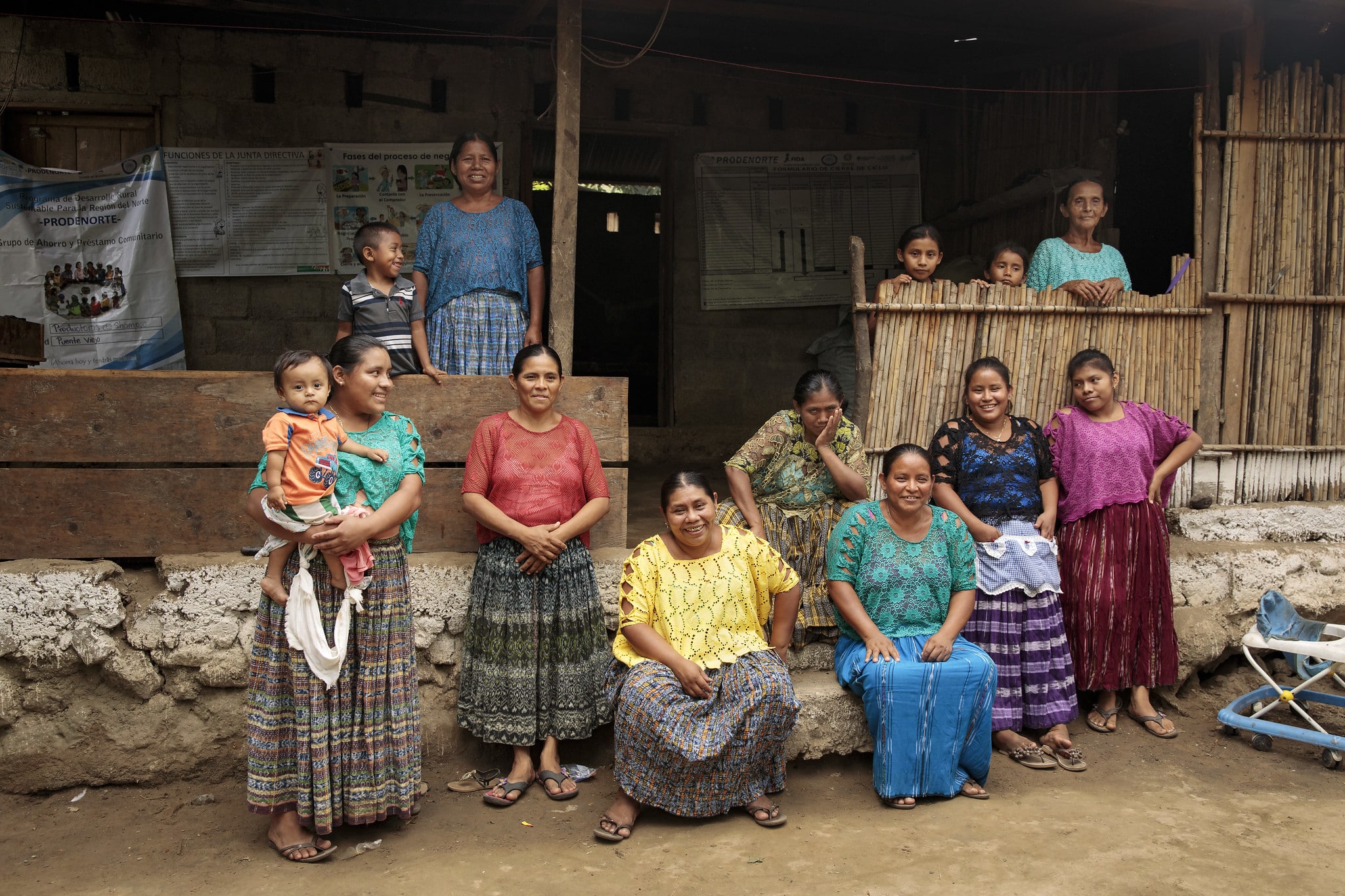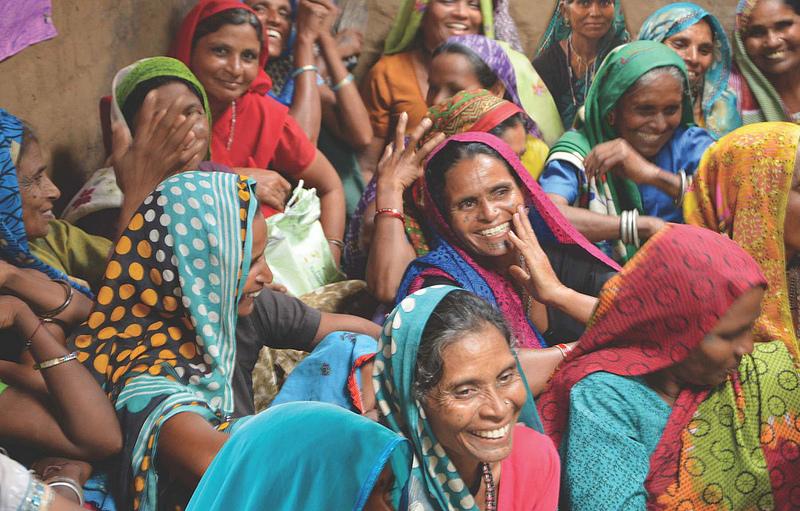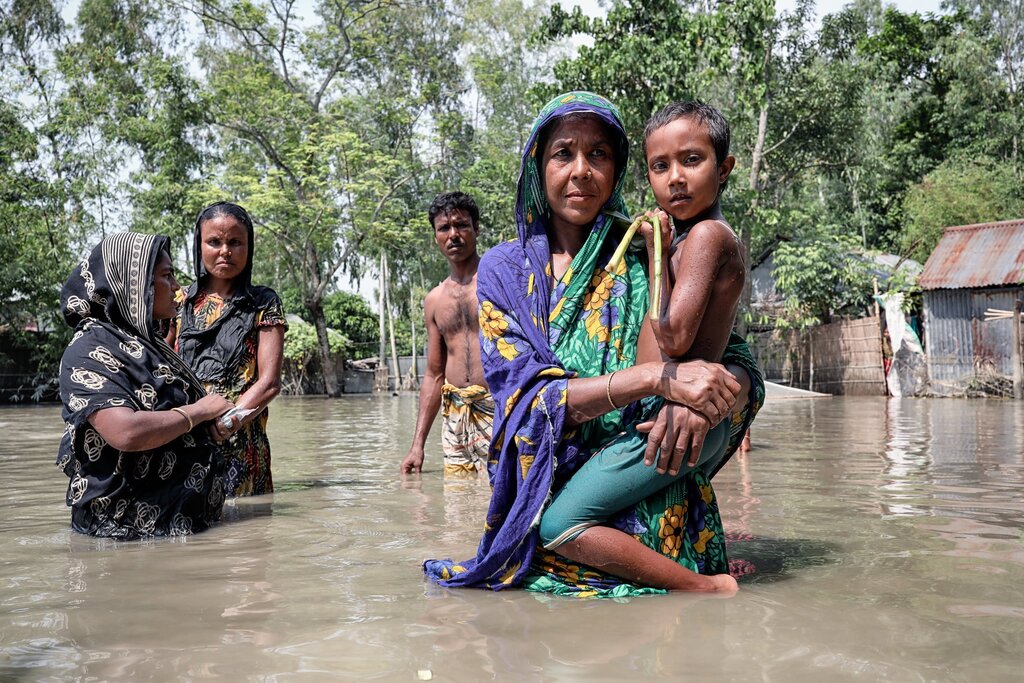As the most challenging global issue of all time, climate change has not only incalculable ecological impacts but is also complexly intertwined with global patterns of societal inequality. In any climate crisis, women and girls always bear the brunt of the negative impacts. However, women’s rights are less frequently discussed in the climate agenda. It needs to be developed into a well-acknowledged fact that gender equality and the climate justice movement are inextricably linked. Climate change has non-negligible gender impacts, including both the exacerbation of pre-existing phenomena of gender inequality and climate-derived vulnerabilities. To celebrate International Women’s Day 2023, which every year falls on March 8, we re-share this story looking at how the climate justice movement could solve global gender inequalities.
—
On March 29, 2021, a report from United National Development (UNDP) once again emphasised that the “triple planetary crisis” of climate change, pollution, and natural loss impacts the very right to life, while women’s rights are unequally at risk and threat. Women, particularly those living in crisis-stricken areas and rural areas, or those belonging to Indigenous groups or a minority, are disproportionately affected. As a result, the UN Commission on the Status of Women has recently set up a new priority target of “achieving gender equality and the empowerment of all women and girls in the context of climate change, environmental and disaster risk reduction policies and programmes.”
Given the magnitude of such a correlation between the climate justice movement and gender inequalities, we take a closer look into ways in which climate change is affecting women’s rights and living conditions.
Women Have Limited Control of and Access to Resources
Women generally have less access to resources than men, especially women living in rural areas and those from a lower socioeconomic group. There are three main contributors exposing women to greater climate injustice: the social construction of womanhood, women’s longer life expectancy, and women’’s poverty.
Due to the discriminatory gender normalities in most patriarchal societies, women have unequal access to natural resources, land, education, financial incomes, water, food, and clean energies compared to men and are often dependent on men to obtain resources when the latter is in control of them.
Many of the areas most affected by climate change are located in the Global South, where women have more social responsibilities and a more integral role to play in running a family. In many rural communities, women and girls are disproportionately responsible for procuring food, water, and domestic energy resources. Such larger burdens make it more difficult for women to acquire equal resources, especially when climate conflicts occur. Under extreme weather conditions, women have to spend more time and travel a long distance to complete their basic tasks as a mother or a wife, such as getting water and food, cooking, and laundry washing. As a consequence, women have less time and effort to pursue a career, education, or more income, since they have the fewest resources available to break free from poverty.
Water access is a distinct indicator of gender inequality in the context of climate conflicts.
In Mexico City, a city that has been plagued by severe droughts, water-related tasks can take up nearly an entire working week (4.4 days) for women. Considering the overwhelming role women normally serve in housework and childcare, domestic water management with limited water accessibility forces them to make unjustified compromises in their personal, vocational, and educational growth.
Women in developed countries do not fare any better. During climate disasters, women farmers in Saskatchewan, Canada, are more likely to fall into debt, have a harder time recovering livelihoods and develop the capabilities of climatic adaptation on farms. The lack of recognition and representation are the two main driving forces on such inequality.

You might also like: How Marginalised Groups Are Disproportionately Affected by Climate Change
Climate Change Exacerbates Sexual and Gender-Based Violence Against Women
Climate change has become a contributing factor in exacerbating gender-based violence against women. Women face a greater risk of gender-based violence amid or after climate disasters, in the absence of social safety programmes, and situations such as food scarcity – intensified by worsening heatwaves and drought.
In climate emergencies, the abrupt breakdown of family and community frameworks caused by displacement put women at a greater danger of domestic violence. Due to the loss of incomes, resources, and security, as well as social pressure arising from sudden changes within a household, women have a bigger chance to be physically or psychologically harmed by their partners. After the environmental catastrophe of Cyclone Nargis in Myanmar for example, there had been a 30% upsurge in domestic violence against women. There also had been a clear spike in the rate of domestic violence after 2005 Hurricane Katrina in the US and the 2020 bushfire in Australia.
Rape and other sexual assaults against women and girls are more common in the context of climate change. Rural women in the Global South are compelled to walk long distances to acquire firewood for cooking, putting themselves at increased risk of being raped. Sexual assaults are also commonplace in settlements for climate refugees. Displaced women, when away from their familiar surroundings, have limited adaptive capacities to protect themselves.
Women’s Physical Vulnerability in Climatic Disaster
There has been a distinct disparity in casualties and deaths between women and men in some disasters, particularly those that occurred in the Global South. Due to physiological differences, women and men have differentiated physical resilience to natural conflicts. Women accounted for 61% of mortality in Myanmar during Cyclone Nargis in 2008, 70% in Banda Aceh after the Indian Ocean Tsunami in 2004, and 91% in Bangladesh during 1991 Cyclone Gorky. Statistics have proven that women are more likely to die in natural disasters, and the worsening climate crisis would only increase the number of female victims. Such extreme weather circumstances generally violate women’s fundamental physical rights and safety.
Social prejudices against women are part of the reason behind women’s relatively weak survivability in a climatic crisis. Although women’s underlying weakness is directly linked to their disadvantaged economic and social status, the most immediate determinant of women’s survivability lies in their physical competence of self-aid in a disaster.
Essential survival skills such as swimming and climbing trees are primarily taught to boys, and in many rural religious communities, girls are not permitted to learn to swim. After the occurrences of disasters, males are given preferential treatment in rescue efforts and medical support, receiving priority over females. According to an analysis of 18 maritime disasters across three centuries, captains and crew, which are male, survive at a notably higher rate than female passengers. Physical abilities are the deciding factor in this scenario, despite the strict implementation of the “women and children first” (WCF) principle in shipwrecks.
For more about the global climate justice movement: Indigenous Climate Justice in a Warming Arctic
Emotional Distress Related to Environmental Crises in Women
Apart from physical disadvantages, women tend to suffer more emotionally than men from climatic events. Mental health issues are another sneaky yet significant threat of climate change to human well-being. Risks to mental health from climate change, the persistent global stressor, are a “creeping development”.The American Psychology Association (APA) has put forward the term “eco-anxiety”, to describe “the chronic fear of environmental cataclysm that comes from observing the seemingly irrevocable impact of climate change and the associated concern for one’s future and that of next generations”. Arisen from direct or indirect exposure to climate change, eco-anxiety can result in a series of harmful psychological reactions, including PTSD, depression, anxiety, phobias, sleep disorders, attachment disorders, and substance abuse.
More on the topic: Explainer: What Is Climate Anxiety?
Women are also more likely to develop undesirable mental conditions than men under the context of incremental climate change. Post-traumatic stress disorder (PTSD) caused by natural disasters is the number one mental issue that unevenly affects women. For most marginalised groups including women, the impacts of climate change can easily morph into climate trauma. Essentially, these traumatic responses are deprived of sudden landscape changes and loss of familiar environmental landmarks. Women have a different psychological patterns of cognitive and emotional responses to general traumatic events, giving them a higher level of sensitivity to negative environmental changes.
In addition to PTSD, women also tend to face a greater risk of other mental disorders such as depression, general anxiety disorders, shock, feelings of abandonment, and even suicidal ideations following extreme weather events. Depression over the immediate struggles and anxiety about the unknown future are more commonly developed by women. This is primitively explained by women’s relatively poorer abilities to manage stressful situations rising from a higher sensitivity to stress hormones. Women’s fixed burdens and responsibilities within a household further consolidate their emotional vulnerabilities.
The Invisibility of Women’s Roles in Climate Response
Women’s presence in climate response seems to be omnipresent but somehow invisible. Women have been deeply underrepresented in many spheres, such as in politics, businesses, and STEM across the globe. In the male-dominant decision-making process regarding climate response, women’s voices are hard to be heard, let alone have specific needs met. Even though being one of the most affected and marginalised groups by climate change, so far women hold barely one-third of leadership positions in climate-related negotiations. This imbalance could lead to an awful increase in existing inequalities and a decrease in result effectiveness if policies or projects are implemented without women’s significant involvement.

Women’s achievements or contributions to climate mitigation are often overlooked or slighted, and their credits are sometimes taken away by men. Some female workers who are on the frontline of the climate apocalypse, such as firefighters, farmers, and rescue workers, do not receive the same level of recognition and publicity as their male counterparts, as these occupations are traditionally portrayed as male-oriented. During climate conflicts, women are uniformly perceived as the “victims’’, with their capabilities and efforts being denied.
How Should the Climate Justice Movement Make Positive Changes?
The first step in solving any problem is recognising there is one, and that’s especially true for the climate justice movement. In a positive sign, gender issues in the context of climate change have been preliminary addressed. Starting from the 18th Conference of the Parties (COP18), and the 2012 United Nations Framework Convention on Climate Change (UNFCCC), women’s rights and gender equalities have been covered in global climate discourse by degrees. Particular directions for solutions are inspired by certain vanguards’ persistent efforts to promote gender equality and protect women’s rights:
- Raise a comprehensive understanding of women’s vulnerabilities
Improvement in gender equality cannot be achieved if women’s unique situations are not fully understood. Most gender injustices are rooted in the nature of patriarchal society and exacerbated by climate change. Provide funding for programmes specifically for women, supporting their physical and mental demands, and resistance against sexual violence. Gender-specific programmes that are culturally competent and meet women’s distinct needs help them build climate resilience.
- Develop a gender-inclusive decision-making framework
To incorporate gender equality in climate change, the climate justice movement sees women’s appeals be equally taken into consideration when it comes to decision-making. A basis for gender-responsive environmental governance is fundamental to achieving effectiveness and encouraging outcomes of policies. This process can be started by increasing the representation of women in climate negotiations. The irreplaceable role of women in climate governance needs to be universally recognised and respected.
- Encourage female participation and leadership in climate actions
Women’s involvement is crucial to effective climate action. A study has shown that as women’s representation in national legislatures grows, more rigorous climate change laws are enacted, resulting in reduced emissions. Female leadership is also key to bringing positive changes in climate strategies. Women around the world are ready to stand up for their environmental rights: hundreds of allied Indigenous women marched in Brazil in 2019 to protest the devastation of the Amazon rainforest, while a women-led group in Uganda established an environmental association to empower women to utilise energy-saving stoves and engage in land planning, agroforestry, and soil conservation activities.
Featured image: UN Women Asia Pacific/Flickr
You might also like: What Is Climate Justice and Why Is It Important?
This story is funded by readers like you
Our non-profit newsroom provides climate coverage free of charge and advertising. Your one-off or monthly donations play a crucial role in supporting our operations, expanding our reach, and maintaining our editorial independence.
About EO | Mission Statement | Impact & Reach | Write for us


















